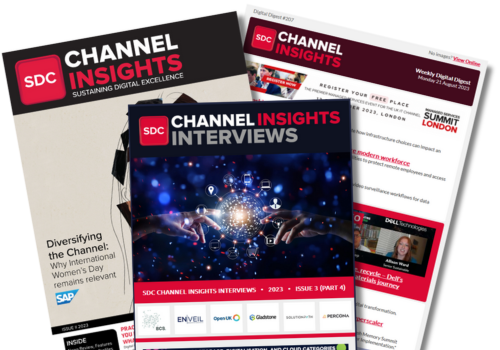With two managers gone, countless VAR dramas, and a physio room that’s busier than a sales desk at the end of Q4, the Premiership moves fast. So does AI.
It’s no surprise that for many MSPs, Environmental, Social Governance (ESG) goals have slipped a few places down the priority table. When you’re juggling growth, client demands,and cash flow, finding time for sustainability planning feels like chasing a ball that’s always two yards ahead.
However, that doesn’t have to be the case. Used carefully, AI can help the channel make real ESG progress, not through expensive, complex rollouts, but by giving teams clean data, freeing people from admin and dull reporting, and uncovering insights no one had time to follow up on before.
Start where your data already lives
Our ESG Unwrapped research showed that the best starting point is to use the data you already have. Basic AI-powered extraction tools can pull emissions-relevant data from invoices, travel claims, facilities logs, and supplier contracts. This will give a snapshot of where your Scope 1, 2 and 3 emissions actually lie without weeks of manual reconciliation.
Once you know where your biggest emissions and costs sit, you can prioritise what to do about them. It might be automating data collection for supplier reporting to save admin time or consolidating local courier jobs so they can be done more efficiently. It’s not complex, just previously invisible.
Make the office your training ground
The same principle applies inside your own walls. Simple AI tools and devices can help you monitor out-of-hours energy use, sort recycling, and track water and waste use. Smart plug-and-play devices can track usage, identify unusual patterns and generate data that’s easy to feed directly into your ESG reporting.
Many partners are already using AI tools to help analyse waste and procurement, cutting over-buying on peripherals and packaging. Travel analysis can suggest lower impact routes or encourage salespeople or execs to meet online when is physical trip is unnecessary.
Scope 3 is the toughest opponent
Scope 3 data is still the toughest opponent. Suppliers send information in different formats, if they send it at all, so Scope 3 becomes a laborious task to get missing information. That’s where small language models (SLMs) can help.
Many SLMs are available free on platforms like Hugging Face and can run securely on local hardware, so your data never leaves the building. Trained on supplier documents, contracts and policies, an SLM can read statements, pull out any references to emissions or recycling commitments, and summarise what’s missing. It can even flag when a supplier’s claims are vague or out of date.
This turns piles of unstructured information into a clear list of who has solid sustainability data and who still needs following up. Over time, it gives you a much clearer picture of your indirect (Scope 3) footprint, without adding too much to anyone’s workload.
With AI, it’s important not to go offside
Good governance keeps things onside. That doesn’t mean writing a 40-page policy; it means setting a few clear boundaries. Know which data is fair game for experimentation, keep people in the loop when AI is being used to inform reports, and log what’s automated.
Most importantly, write it down in plain English. Transparency helps when auditors or clients ask how you got your numbers, but it also builds trust across your own teams. Don’t forget to involve the people who own the process. The best ideas can come from ops, finance, facilities (or even the sales and marketing teams!), it’s not just IT.
We’ve also got to be honest about AI’s own footprint. Training large models consumes energy and water, although much depends on where and how they’re run. The right response isn’t to avoid AI altogether (that ship has already sailed), but to find a better balance between the environmentalcosts and gains. Currently, the thinking is that, unless you’re a hyperscaler or huge corporate, it’s more likely your business will save more resources than AI consumes.
Play to the final whistle
The partners leading the way in our research weren’t the ones with the biggest budgets. They were the ones willing to start small, experiment, and share what they learned. Start with the data you have, have an ESG goal in mind, and use AI to help you reach that goal one step at a time. And unlike some VAR decisions, your results won’t be overturned on review.






